First, the most important item for me today. Happy Anniversary Rita. A wonderful 43 years!

We started the celebration early by seeing James Taylor at Starlight last night. “How Sweet It Is (To Be Loved by You).”
It’s cool to be married to your managing editor.
Now back to baseball.
In 1997, the Negro Leagues Baseball Museum moved to its current space. A poster was printed for the occasion, and it had a prescient headline…

In 2020, MLB acknowledged that the Negro Leagues did indeed play major league ball. And last week, MLB announced that Negro League statistics are now merged into the MLB database. This created new leaders in some categories, most notably Josh Gibson edging ahead of both Ruth and Cobb.
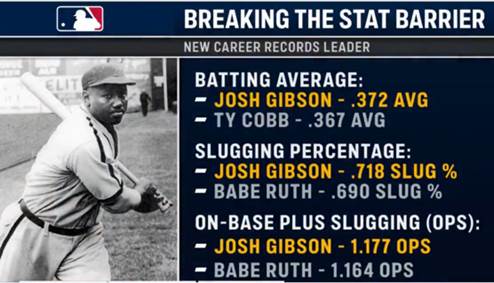
This by no means reduces the greatness of Ruth and Cobb. It is a reminder that they are among the best to ever play the game.
Tyrus Cobb, the great-grandson of Ty Cobb, told the AP: “Baseball history is part of U.S. history, and I think [MLB] acknowledging and incorporating the Negro Leagues is a huge step in kind of bringing all the parts of baseball history together. And I think it’s actually pretty exciting that there’s a new statistical batting average leader.”
One of the happiest men in town is President Bob Kendrick of the Negro Leagues Baseball Museum, and he is in demand for interviews around the country. For a sample of Bob’s take on this good news, click here for his 7-minute interview with Joel Goldberg.
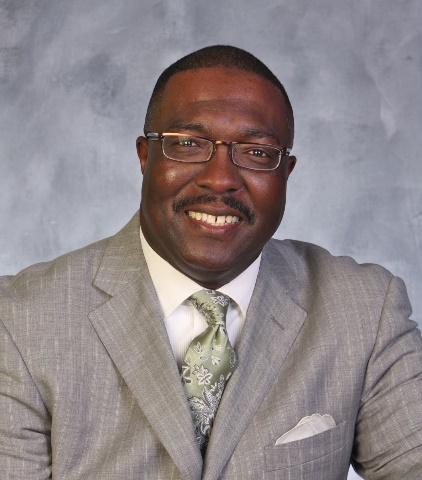
What is “Major League” Baseball: On April 12, 1955, I was 13 years old and attended the first Kansas City A’s home game. It was widely billed as the first-ever major league game in our city. Former President Truman threw out the first pitch. Below, the crowd leaving the ballpark that day.
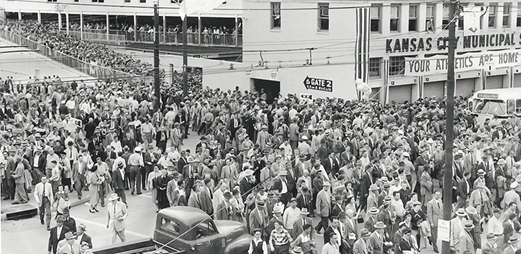
At the time, most of my knowledge of baseball history was the play of the American and National leagues in the “modern” era, starting in 1901 when the American League was formed and became the major competitor for the older National League. The two leagues began World Series play in 1903.
I would later learn that what is “major league” is in the eye of the beholder.
I’ve always liked Buck O’Neil’s take on this subject. In Joe Posnanski’s travels with Buck, beautifully chronicled in The Soul of Baseball, Joe found that people walked up to Buck almost every day and said something like this: “I’m sorry you never got to play in the major leagues.” And Buck would respond: “How do you know I didn’t?” Buck knew he had.
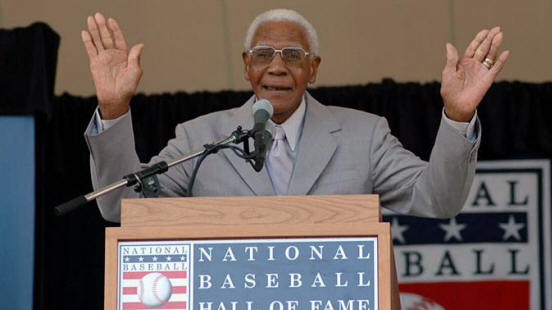
Buck was right. And it wasn’t just the Negro Leagues. Let’s look at the history.
Major Leagues (Per MLB – 1969): In 1968, MLB (the AL and NL) formed a “Special Baseball Records Committee” to rule on several matters relating to statistical baseball records. Part of the task was to determine what leagues and seasons would be considered “major league” for inclusion in the MLB statistics database.
Many leagues were established in the late 19th century and early 20th century. Most did not have the talent and schedules to be considered major league, but some were considered competitive. In 1969, the MLB committee issued its report and deemed the following leagues and seasons to be major league:
National League (1876-present)
American League (1901-present)
American Association (1882-91)
Union Association (1884)
Players’ League (1890)
Federal League (1914-15).
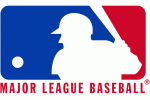
With this updated info, I learned that I had not seen the first major league game in Kansas City. That game was in 1884. Under the new parameters, Kansas City was the home of six major league baseball franchises:
Kansas City Cowboys of the Union Association (1884)
Kansas City Cowboys of the National League (1886)
Kansas City Cowboys of the American Association (1888-1889)
Kansas City Packers of the Federal League (1914-1915)
Kansas City Athletics of the American League (1955-1967)
Kansas City Royals of the American League (1969 to date)
Notably missing: The Negro Leagues. For Kansas City, this meant the legendary Monarchs were not included. Worse, the Negro Leagues had not even been considered.
And that would be the MLB’s official position for another 51 years.
Major Leagues (Per MLB – 2020): On December 16, 2020, MLB announced something many of us already knew. The Negro Leagues played major league baseball. More specifically, the statistics from seven leagues known collectively as the Negro Leagues would become part of the official MLB historical record.
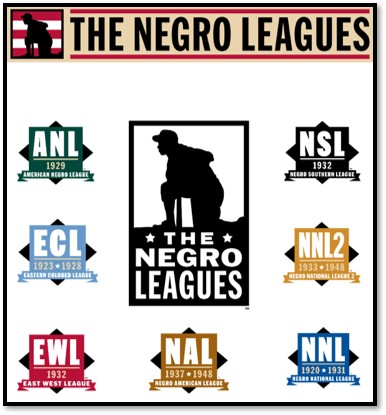
There was still work to be done to assemble and vet the statistics, but MLB was finally on the right path.
Major League Record Book (2024): After the 2020 announcement, MLB formed the “Negro Leagues Statistical Review Committee,” chaired by John Thorn, the respected Official Baseball Historian for MLB. There are 17 members on the committee, including NLBM President Bob Kendrick and Kansas City authors and Negro League historians Larry Lester and Phil Dixon.
The committee did not start from scratch. A devoted band of researchers has been working on this project for decades. Larry Lester, a co-founder of the Negro Leagues Baseball Museum, has been a key player in the effort. “[As a kid] I started researching the Black newspapers all over the country and found more information than I would ever imagine.” He loved going through the box scores and reading about the players from Black sportswriters. He also visited with former Negro League players, including Cool Papa Bell in St. Louis.
Lester (below) was hooked. In 2000, he reached out to about 30 researchers across the country to access more information. They combed through Black newspapers, scorebooks, photo albums, microfiche, etc. to find box scores to verify the details of the games. There was no software to scan a box score and convert it to a spreadsheet or database, so the numbers had to be input manually. After about five years, they accumulated a solid database that is maintained on the “Seamheads” website (click here).
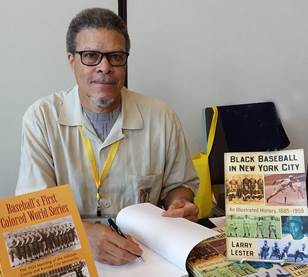
The MLB committee audited the Seamheads work product to ensure integrity of the numbers. This was its own meticulous process. For an excellent detailed report of the committee’s work and decisions, see Jay Jaffe’s piece in Fangraphs (click here). Jaffe’s conclusion, “MLB’s decision to acknowledge the Negro Leagues as major leagues may not have hit every single right note, but it has stimulated new interest and scholarship in this crucial area of baseball history. It won’t ever be enough to make whole the men whose careers and lives were shaped by the injustices of segregation and racism, but by shining new light on their accomplishments and their stories, our understanding of baseball has taken several steps forward.”
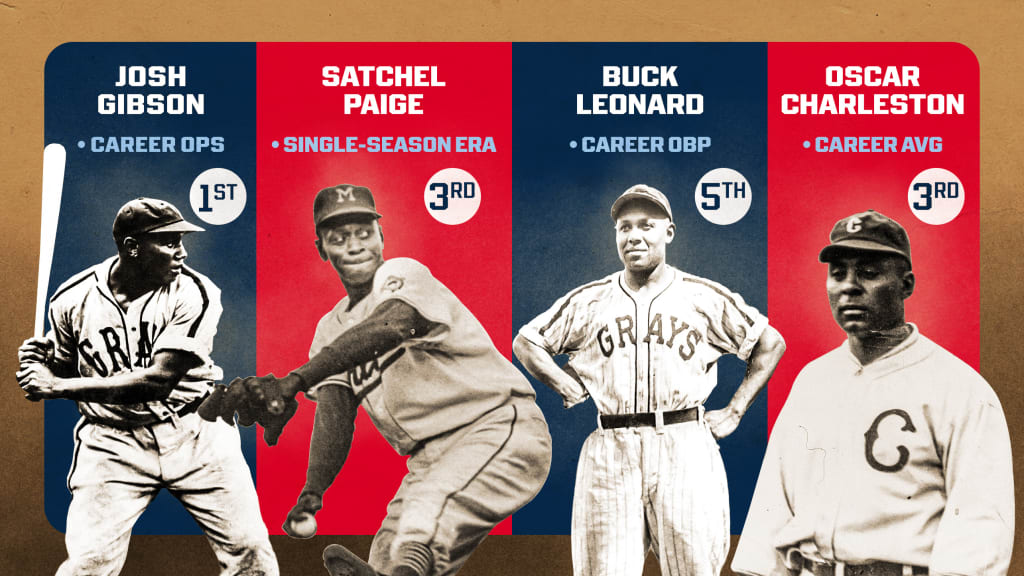
Above, some of the stars now on the MLB leaderboard. They are all represented by statues on the Field of Legends at the Negro Leagues Baseball Museum.
The Other Kansas City Major Leaguers: The Monarchs, A’s and Royals are familiar names to Kansas City baseball fans. What about those other major league teams?
Union Association – Kansas City Cowboys (1884): In 1884, St. Louis real estate mogul Henry Lucas hired Ted Sullivan to identify franchise cities and organize a new league – the Union Association. Ted also created and managed the St. Louis team owned by Lucas.
Ted Sullivan is one of the great characters in baseball. Hot Stove readers have met Ted before because he is the subject of a delightful book by Kansas City authors Pat O’Neill and Tom Coffman. Click here for the Hot Stove review of the book.
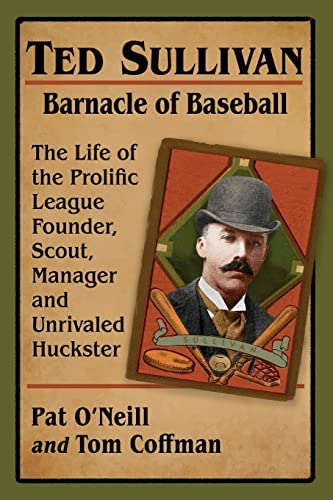
On May 31, the Altoona (Pennsylvania) franchise folded. On June 7, the league replaced Altoona with a new franchise in Kansas City (the Cowboys, a/k/a the Unions and Kaycees).
The Kansas City team got off to a poor start, so the league sent Ted Sullivan over to the “fast-growing cowtown” to manage the Cowboys. As recounted in Ted Sullivan: Barnacle of Baseball:
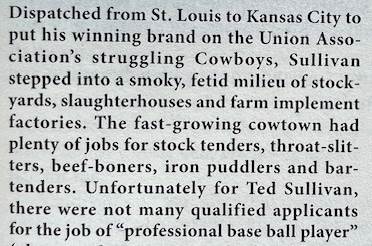
Sullivan’s “winning brand” was not enough. The Cowboys finished the season with a 16-63 record.
The Union League was also a failure. It folded after just one season but lives on as major league in the MLB record book.
National League – Kansas City Cowboys (1886): The next major league team in Kansas City was also called the Cowboys but was not connected to the Union Association team. These Cowboys were admitted to the National League on a trial basis for the 1886 season, which they finished with a 30-91 record. After the season, Kansas City was dropped and required to sell its players back to the league. A new Pittsburgh franchise took its place (and still plays today as the Pirates).
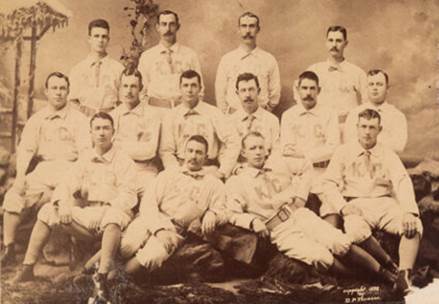
American Association – Kansas City Cowboys (1888-1889): The Cowboys team name was resurrected in 1888 with a new franchise joining the American Association. The team had losing records in both of its seasons: 1888 (43-89) and 1889 (55-82).
A Hall of Famer began his career as a Cowboy. Billy Hamilton had a partial season with the team in 1888, followed by a full season in 1889 (leading the league with 111 stolen bases). “Sliding Billy” went on the become the premier base-stealer of the era. He had a .344 batting average in his 14-year career. His most remarkable record was scoring 198 runs in 1894 (Babe Ruth’s 177 in 1921 being the modern era record). He was elected to the Hall of Fame in 1961.

Federal League – Kansas City Packers (1914-1915): The Federal League operated as a self-declared major league for two seasons (1914-1915). The Kansas City Packers played both seasons, finishing 67-84 in 1914 and 81-72 in 1915. They led the league until late August in 1915, but then faded to fourth place.
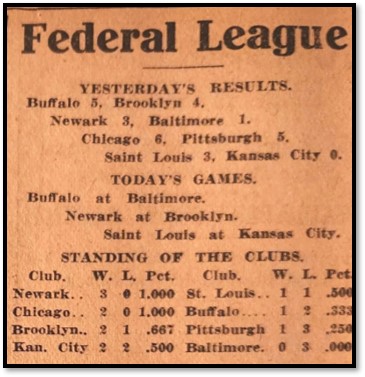
In addition to its statistics, the Federal League contributed two legacies that endure a century later. Wrigley Field and a Supreme Court decision.
On April 23, 1914, the Kansas City Packers opened the season on the road against the Chicago Whales (photo below). The game was played in the new Weeghman Park, named for Whales’ owner Charles Weeghman.

The Whales played at Weeghman Park in 1914 and 1915. The Federal League then folded, Charles Weeghman acquired a majority interest in the Chicago Cubs, and the Cubs started playing in Weeghman Park in 1916. Charles Wrigley later gained control of the club, and after first changing the stadium name to Cubs Park, it was rebranded as Wrigley Field in 1927.
The Baltimore Terrapins of the Federal League filed a lawsuit after the league folded, claiming that the National and American leagues were monopolies. In 1922, the Supreme Court ruled against the Federal League, confirming MLB’s powers to control players, expansion, relocation and team ownership. The reserve clause that bound the players was ultimately eliminated, but MLB remains free of anti-trust laws. The NFL, NHL and NBA do not have this benefit.
The threat of losing this benefit can be used as leverage. When Charlie Finley moved the A’s from Kansas City to Oakland in 1968, Missouri Senator Stuart Symington applied pressure on MLB to locate an expansion franchise in Kansas City. MLB no doubt feared Congressional action, so the American League not only agreed to a KC expansion team, but they also moved the timeline up a year. Senator Symington threw out the first pitch in the Royals inaugural opener in 1969 (photo below). MLB also got what it wanted. The Supreme Court decision from the Federal League case remains the law of the land.
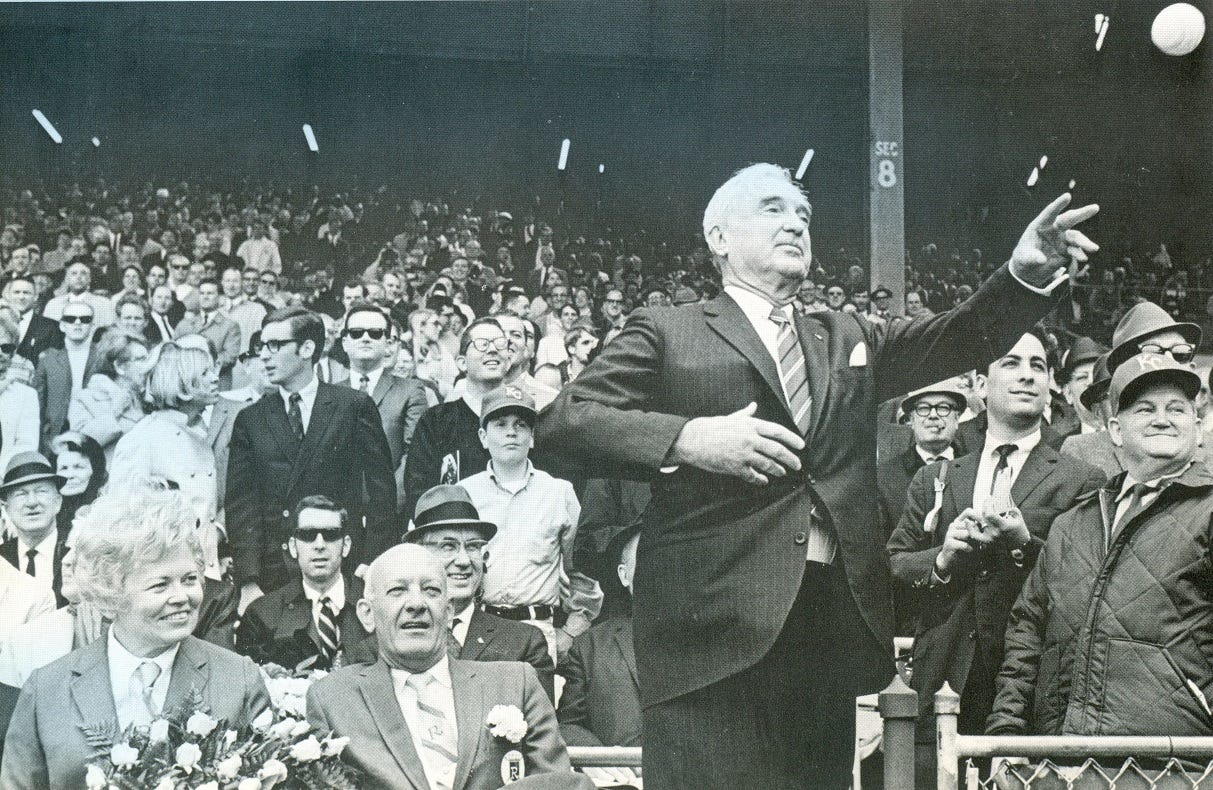
Royals Report: How about those Royals? Some faltering recently, but fans are abuzz with the possibilities. Crowds are growing. A good number of cable-cutters have signed on to the Bally streaming option. And if the season ended today, the Royals would be a Wild Card team in the playoffs. A refreshing change from recent years.
Last weekend saw two major events at the K. On Friday night, the team hosted the annual Big Slick game to kick off a weekend of fundraising for Children’s Mercy Hospital. My son Brian has been part of the volunteer team since Big Slick started 15 years ago. While working the event at the K last Friday, Brian and his daughter Emersyn got a moment with Royals owner John Sherman.
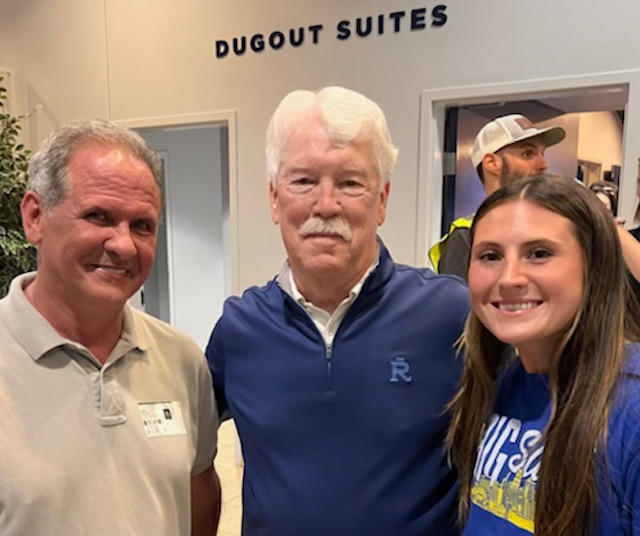
Saturday at the K was Pride Day. Royals tweet: “Baseball is for everyone. We can’t wait to celebrate Pride with you today, Kansas City.”
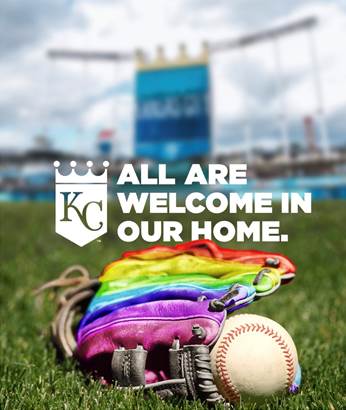
Lonnie’s Jukebox – Bill Lochman Edition: On May 5, Bill Lochman died at the age of 82. We were friends for almost 70 years (obit here). A Celebration of Life will be held from 1 to 4 PM on Saturday, June 8, at the American Legion in Independence (16701 E. US Hwy 40).
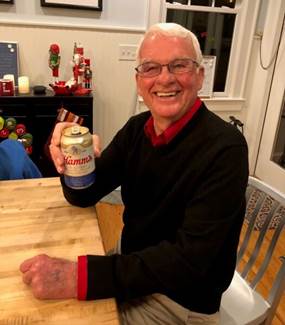
I wrote a Hot Stove-length tribute to Bill that I sent to Bill’s friends and family plus many who worked in the political world in the 1970s. The tribute ended with a Lonnie’s Jukebox, which I am modifying for this Hot Stove to show some highlights from the tribute. If you would like to read the full tribute, click here.
I met Bill at Van Horn High School, and in our senior year, we bonded over a teenage passion – cars. Bill and our mutual friend Jim Graham drafted me into their hot rod club, the Draggin’ Diplomats. This became my social life, especially in the summers of 1959 and 1960, which I call my American Graffiti summers.
After the Air Force for Bill and law school for me, Bill and Jim Graham recruited me to their next venture, the Young Democrats. With Bill acting as my first political mentor, we worked extensively in county politics which led to a string of opportunities for me, in and out of politics. But for Bill’s recruiting me to the YDs, combined with his enthusiasm and mentorship, I would not have had many of those opportunities.
Now for the playlist from the tribute.
“Rock Around the Clock” by Bill Haley and the Comets (1955). An early rock ‘n’ roll anthem that helped launch our high school soundtrack.
“Maybelline” by Chuck Berry (1955). Cars, especially fast cars, were a common subject of the rock ‘n’ roll genre. A perfect fit for when we got our first cars and joined the Draggin’ Diplomats, the club that ran the tech line at the KC dragstrip.
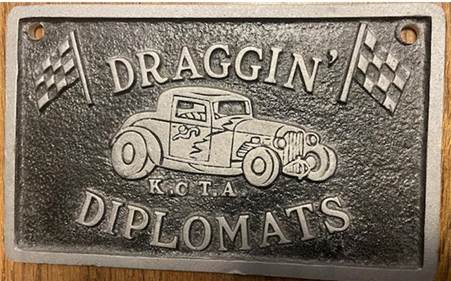
“I’m Walkin’” by Fats Domino (1957). Fats was a Teen Town favorite, along with Little Richard, Buddy Holly, Chuck Berry, Elvis Presley, etc.
“Lollipop” by the Chordettes (1958). Bill received serious injuries in his junior year when he hit a tree while driving his mother’s Plymouth at 80 mph. I don’t remember the specific injuries, but I’ll never forget he was able to tell us what song was playing on the car radio when he hit the tree. “Lollipop.”
“Tijuana Jail” by the Kingston Trio (1959). Over the Easter Holiday break in our senior year, Bill and a friend drove to Texas to see Bill’s girlfriend who had recently moved there. They got into some trouble along the way and ended up in the Corsicana, Texas, jail. This Kingston Trio song had just come out, and Bill’s fellow students revised the words for the occasion: “So, here we are in the Corsicana jail. Ain’t got no friends to go our bail/So here we’ll stay ‘cause we can’t pay. Just send our mail to the Corsicana jail.” The good news is that after one night in jail, they were bailed out.
“Party Doll” by Buddy Knox (1957). A #1 hit in 1957, but still on the jukebox in 1959 at the Big Six diner, one of our late-night haunts. The owners said people kept playing it, so no reason to update that slot in the jukebox.
“Kansas City” by Wilbert Harrison (1959). This song prompted us to head to Vine Street where we ended up at the original Blue Room. With the relaxed regulatory environment, four underage white boys in tee shirts joined an otherwise Black crowd dressed to the nines. We had no idea who would be performing, so were pleasantly surprised when Dizzy Gillespie took the stage.
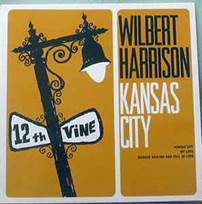
“Shake Rattle and Roll” by Big Joe Turner (1954). When we were at the Blue Room, we did not realize that blues shouter Big Joe Turner got his start just around the corner. Turner had the first hit of this song – on the rhythm and blues charts – followed by the one we knew by Bill Haley and the Comets.
“Running Bear” by Johnny Preston (1959). This #1 hit carried over into 1960 and was part of the soundtrack for our second American Graffiti summer.
“Mustang Sally” by Wilson Pickett (1966). In 1968, we attended the state Young Democrats convention in Jefferson City. There were huge party nights around the pool, and I remember the band played from a balcony and featured covers of songs by Wilson Pickett and Mitch Ryder and the Detroit Wheels (“Devil with a Blue Dress On”). I’m picking “Mustang Sally” from the setlist because it matched a raffle held by our club at the convention. Hundreds of tickets were sold. The winner won a Mustang with a red interior. We also touted that it had four-on-the-floor. The winner was surprised when the prize was a black horse (in a trailer in the parking lot).
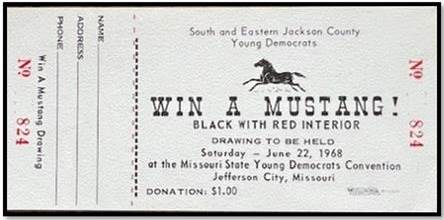
“Time Won’t Let Me” by the Outsiders (1966). Bill’s wife Lois tells me this was their song. It came out in 1966 and, contrary to the lyrics, Bill and Lois did not “wait forever” – got married the next year.
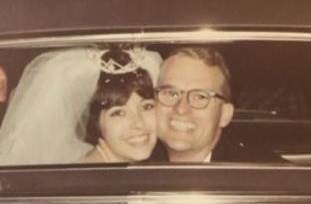
RIP my friend.